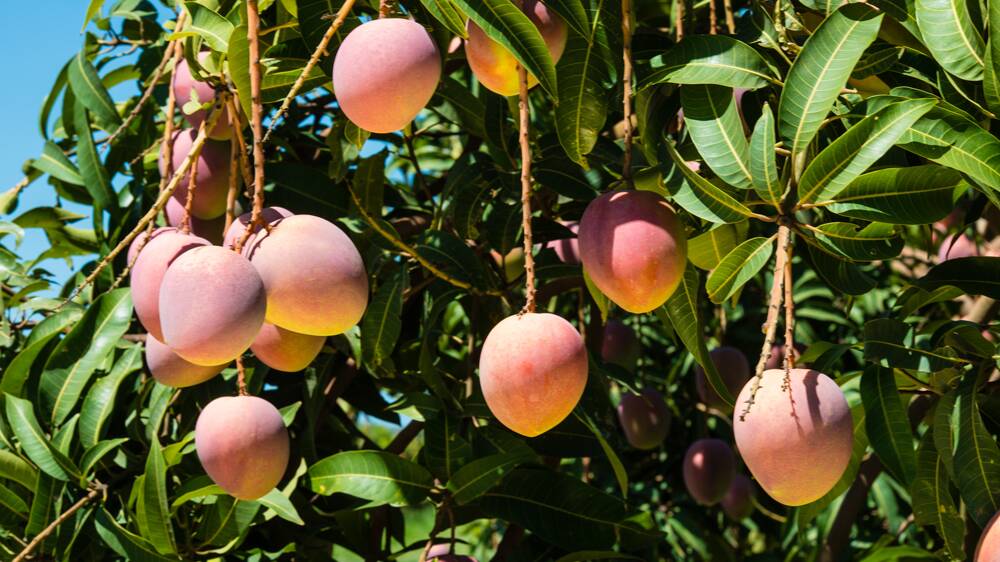Mango Plant Care – How to Grow Your Own King of Fruits at Home
By Greenways Nursery
The Mango plant (Mangifera indica) is more than just a tree—it’s a symbol of summer, sweetness, and Indian tradition. Whether you’re dreaming of plucking mangoes right from your terrace or growing a dwarf variety on your balcony, mango plants are surprisingly rewarding when cared for correctly.
This guide offers everything you need to know about mango plant care, especially for Indian conditions—sunlight, soil, watering, potting, and fruiting tips included.
🌿 Mango Plant Overview
| Common Name | Mango Plant / Aam ka Ped |
|---|---|
| Botanical Name | Mangifera indica |
| Family | Anacardiaceae |
| Type | Fruit Tree / Perennial |
| Size | 10–30 ft. in-ground; 4–6 ft. in pots |
| Sunlight | Full sun (6–8 hrs daily) |
| Soil | Loamy, well-drained, slightly acidic |
| Watering | Daily during summer |
| Bloom Time | Spring (Feb–April) |
| Fruit Time | Summer (May–July) |
| Lifespan | 25+ years with proper care |
☀️ Sunlight Requirements
Mango plants love the sun. Whether planted in pots or the ground:
- Ensure 6–8 hours of direct sunlight daily
- Best suited to terrace gardens, lawns, and south-facing balconies
- Without proper sunlight, flowering and fruiting may be delayed or weak

💧 Watering Schedule (India Specific)
In Indian summers, daily watering is critical for young mango plants and potted trees.
- Summer (March–June): Water daily, ideally early in the morning. Make sure the water reaches deep into the soil to encourage strong roots.
- Monsoon (July–September): Water only if there’s no rain for 2–3 days. Ensure the pot or bed has excellent drainage.
- Winter (October–February): Water every 2–3 days, or when the topsoil dries out completely.
Use mulch or dried leaves around the base to retain moisture and keep roots cool.
🌱 Soil and Potting Tips
- Use a loamy mix of garden soil, compost, and river sand (in 2:1:1 ratio)
- Ensure good drainage to prevent root rot
- For pots: Choose a container at least 18 inches wide and deep with drainage holes
- Repot every 2–3 years or when the plant becomes root-bound
🌼 Fertilizer & Feeding Schedule
To ensure healthy growth and fruiting:
- Feb (before flowering): Use organic manure + potash
- May (fruiting period): Add compost, cow dung, or seaweed extract
- Sept (post-fruit care): Use balanced NPK or vermicompost
Avoid excessive nitrogen after flowering—it may promote leaves instead of fruits.
✂️ Pruning Mango Plants
- Prune once a year, after the fruiting season (June–July)
- Remove dried, crowded, or weak branches
- In potted plants, prune to control height and encourage bushy growth
Avoid over-pruning in the first year—let the plant settle naturally.
⚠️ Common Problems & Solutions
| Problem | Symptoms | Solution |
| Powdery mildew | White spots on leaves | Spray neem oil or baking soda solution |
| Leaf burn | Brown edges | Avoid harsh fertilizers; provide shade at noon |
| No flowering | Overfeeding with nitrogen | Reduce feed; use potash instead |
| Fruit drop | Uneven watering or stress | Maintain daily watering and mulch the base |
✅ Quick Care Recap
- 🌞 Needs 6–8 hours of sunlight
- 💧 Water daily in summer
- 🪴 Use loamy, well-drained soil
- 🌿 Fertilize during key growth periods
- ✂️ Prune yearly after fruiting
- 🛋️ Thrives in pots or ground

🌳 Is Mango Plant Right for You?
Yes, if you:
- Have a sunny space
- Want to grow your own fruits
- Can water daily during summer
Maybe not, if you:
- Live in a shaded apartment
- Travel often with no one to water
- Don’t enjoy pruning or repotting
🛒 Buy Mango Plants from Greenways Nursery
At Greenways Nursery, we grow premium-quality Mango plants in both grafted and dwarf varieties. Whether you’re growing in a pot, terrace garden, or backyard—our plants are:
- Well-rooted and disease-free
- Adapted to Indian climates
- Available in varieties like Alphonso, Langra, Dasheri, Amrapali, and even the exotic Miyazaki Mango
🌟 Spotlight: Miyazaki Mango – The World’s Most Expensive Mango
Looking for something truly luxurious? We now offer the rare and exotic Miyazaki Mango—a high-value Japanese-origin mango successfully grown in select Indian regions.

Why It’s Special:
- 🔴 Deep ruby-red skin unlike any common mango variety
- 🍯 Exceptionally sweet, fiberless pulp with melt-in-mouth texture
- 🌱 Needs controlled sun, temperature, and humidity—ideal for collectors
- 💎 Globally known as “Egg of the Sun”, fetching thousands in auctions
Interested in growing Miyazaki mango? Contact Greenways Nursery for pre-booking and expert care guidance.
Yes! Use a large pot (18–24″) and choose dwarf or grafted varieties.
Grafted plants fruit in 2–3 years. Seed-grown ones take 6–7 years.
Yes! Dry and compost them—great for organic feeding.




Leave A Comment